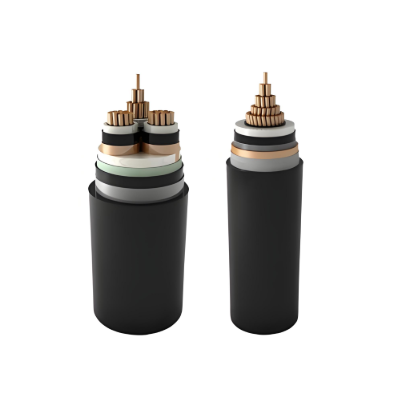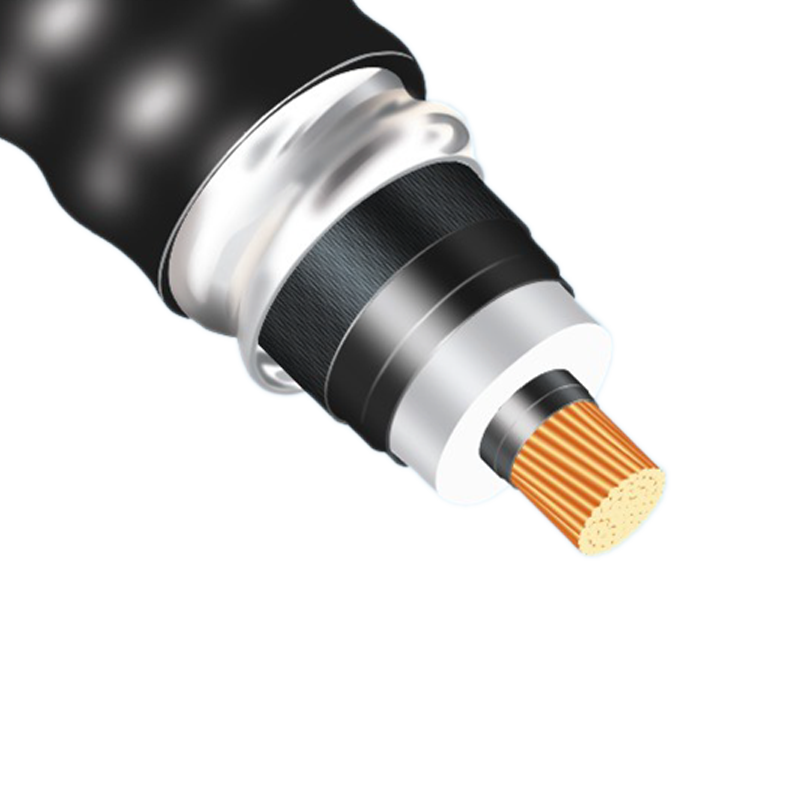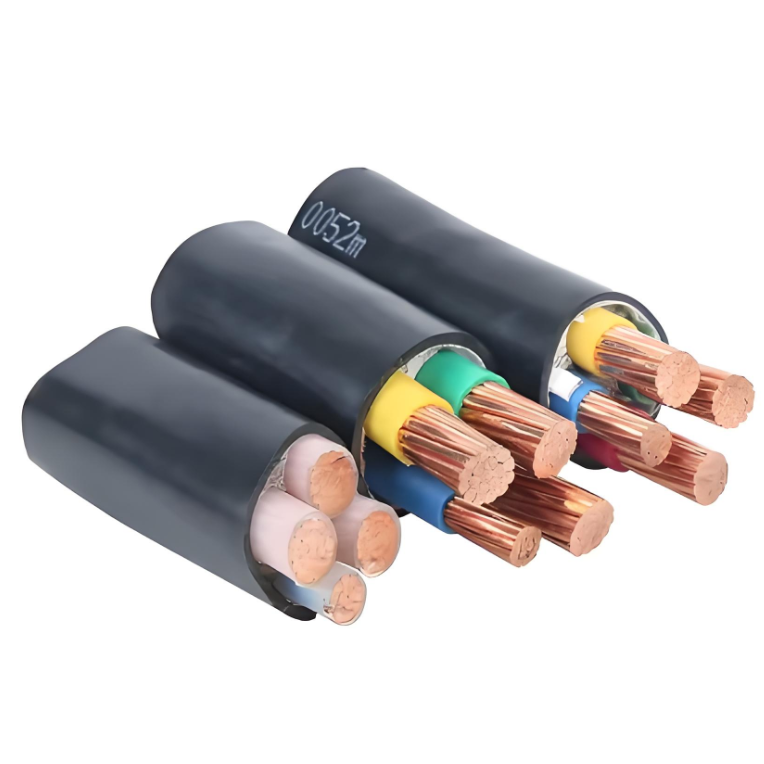What is a Coaxial Cable?
A coaxial cable is a type of electrical cable designed to transmit high-frequency electrical signals with minimal interference. It features a central conductor (typically copper or copper-plated wire) surrounded by a cylindrical insulating layer, which is then enclosed by a conductive shield. This shield usually consists of one to four layers of woven/braided aluminum or copper wire, often combined with aluminum foil for enhanced performance.
Key Components and Construction
Central Conductor: Carries the electrical signal. Made of copper or copper-clad materials for optimal conductivity.
Insulating Layer: Separates the central conductor from the shield, preventing short circuits and maintaining signal integrity.
Conductive Shield: Typically a braided mesh or foil (or both) that blocks external electromagnetic interference (EMI) and contains the signal within the cable.
Outer Sheath: A protective insulating layer that shields the cable from physical damage, moisture, and environmental factors.
The term "coaxial" derives from the alignment of the central conductor and the shield along the same geometric axis, ensuring consistent signal transmission and minimizing radiation loss.
Common Applications
Coaxial cables are widely used in scenarios requiring reliable high-frequency signal transmission:
Cable Television (CATV) and video distribution systems.
Radio Frequency (RF) and microwave communications, such as in antennas and satellite dishes.
Computer Networks (e.g., older Ethernet systems) and industrial instrumentation.
Audio and Video Equipment: Connectors for devices like televisions, gaming consoles, and audio systems.
Advantages Over Other Cables
Compared to unshielded cables (e.g., twisted-pair wires), coaxial cables offer:
Superior resistance to EMI and radio frequency interference (RFI).
Higher bandwidth for transmitting high-frequency signals over longer distances.
Stable impedance, ensuring consistent signal quality.
Types and Variations
RG Cables: Standardized types (e.g., RG-6, RG-59) used in CATV and networking, differing in insulation thickness and shield quality.
Low-Loss Coax: Designed for high-power or long-distance RF applications, using thicker conductors and advanced shielding.
Triaxial Cables: Feature an additional inner shield layer for extreme noise environments, common in professional audio and medical equipment.

Operation of Coaxial Cables
When electrical current flows through a copper wire, not all energy reaches its destination intact. Some energy is lost as heat due to the internal resistance of the copper. Electrical energy is carried by electrons, which emit electromagnetic radiation of varying frequencies and wavelengths as they jump between energy levels after absorbing energy.
Applications of Coaxial Cables
Coaxial cables serve as transmission lines for radio frequency (RF) signals. They connect radio transmitters and receivers to antennas, facilitate data transmission in computer networks, and are widely used for distributing television signals.
A key advantage of coaxial cables over other transmission lines is that in an ideal coaxial cable, the electromagnetic field carrying the electrical signal is confined solely to the space between the inner and outer conductors. This allows the cables to be installed near metallic objects (e.g., gutters) without significant power loss during signal transmission—unlike other lines that may leak signals into the environment.
Signal Leakage in Cables
Signal leakage occurs when electromagnetic fields or radiation penetrate the cable’s shield, potentially in all directions. External signals can also intrude into the cable, causing interference (a process called ingress). Ingress introduces noise and degrades signal quality. Conversely, signals within the cable can leak into the environment (egress), leading to interference and reducing transmission efficiency.
Why Are Coaxial Cables Highly Insulated?
Household electrical cables are insulated for safety and to minimize energy loss. Insulation provides high resistance to energy leakage into the surroundings. While coaxial cables, like other cables, can emit electromagnetic radiation and heat, their robust insulation mitigates these issues. For a single-core cable, the resistance to electrical energy leakage offered by the insulation is characterized by:
Coaxial cables remain a critical component in modern telecommunications and electronics, balancing signal integrity, durability, and cost-effectiveness for a wide range of applications.

ρ = resistivity of the conductor.
r1 = radius of the conductor.
r2 = radius of the insulator.
The Pervasive Impact of Electromagnetic Waves
In our daily lives, we are constantly bombarded by electromagnetic waves from all directions. Countless waves—radio waves from nearby stations, microwaves, cellphone signals, infrared radiation, and more—perpetually pass through our homes. This omnipresent electromagnetic environment creates a critical challenge: waves emitted by cables may share the same frequency or wavelength as others, leading to interference. Cables can both leak signals (reducing their intensity and causing disruptions) and absorb nearby signals, degrading performance.
For example, when a cellphone is active, a radio is tuned in, and a TV is powered on, poorly insulated coaxial cables would likely drown out audio due to overwhelming interference. Similarly, holding a cellphone near a radio often triggers unwanted noise as the devices’ electromagnetic fields clash. This highlights the fundamental role of insulation in coaxial cables.
The Role of Insulation in Coaxial Cables
Coaxial cables are engineered with robust insulation to address two core challenges:
Preventing Signal Leakage (Egress):The insulation and shield work together to contain the electromagnetic field strictly within the space between the inner conductor and outer shield. This design minimizes energy loss as heat or radiated signals, ensuring that weak signals (e.g., TV broadcasts or network data) remain strong and undistorted.
Blocking External Interference (Ingress):The multi-layered shield (typically a combination of braided metal and foil) acts as a barrier, repelling external electromagnetic waves from radios, cell towers, or other devices. This is crucial for maintaining signal purity, especially in environments saturated with competing frequencies.
The Engineering Advantage of Coaxial Design
The coaxial structure confines electric and magnetic fields to the dielectric insulator (the layer between the inner conductor and shield). This dielectric material is specifically chosen for its non-conductive properties, preventing both electrical leakage and heat transfer. As a result:
Weak signals (e.g., from medical sensors or radio telescopes) remain unaffected by external noise.
High-power signals (e.g., in industrial or broadcast systems) do not radiate into nearby structures, reducing the risk of interference or safety hazards.
Conclusion
In a world dominated by electromagnetic activity, coaxial cables stand out as a solution for reliable, interference-free signal transmission. Their unique design—combining precise insulation, a grounded shield, and a confined electromagnetic field—ensures they can handle everything from delicate data streams to high-energy signals without compromise. This makes them indispensable in applications where signal integrity and efficiency are non-negotiable, from global telecommunications to everyday home entertainment systems.



























